To see how this General Extrusion operator maps variables, consider a plane stationary heat conduction problem with the left and right edges at temperatures of 300 K and 400 K, respectively. From the Extrude from list, select Faces to extrude planar faces from the 3D geometry. For meshing the model, sometimes an automatic mesh is sufficient, but we want to make our own for this model to improve convergence on the soil-wall boundary. In these first two examples, the Use source map check box in the Source section of the settings window has been left unchecked. One option involves a sweep of the geometry, removing the geometry (excavation) one step at a time. General Extrusions, Inc. produces aluminum extrusions in compliance with RoHS (Restriction of Hazardous Substances) requirements. The General Extrusion operator is used to define the velocity field in all three periodic domains. Mapping of data defined on a boundary (left) along the direction normal to the plane and into a volume (right). The General Extrusion coupling's 'Mesh search method' is very important for model performance in largers models #resolventtip: Get the best performance out your 'General Extrusion'-coupling in Comsol The company produces standard and custom aluminum extrusions for manufacturers in the appliance, medical equipment, transportation, and automotive markets, among others. I hope I have not missed it. Extrusion operators are used to construct pointwise relations between source and destination points. Multiscale Modeling in High-Frequency Electromagnetics. Add boundary 8 and change the y-axis data expression to v and use millimeters as the unit. For questions related to your modeling, please contact our Support team. We can similarly evaluate the temperature at any other point. Mapping of data defined on a boundary (left) along the direction normal to the plane and into a volume (right). All you need are the time-dependent coordinates of the point where you would like to evaluate the temperature. We need to provide T_d and T_s, such that. At any given time, the (x, y, z) coordinates of this point are given by: (0.5[in]*cos(t), 0.5[in]*sin(t), 2.75e-4[m]), where is the angular velocity of the rotating wafer disk. Submit feedback about this page or contact support here. In such cases, we can use projection, integration, average, maximum, or minimum component couplings. Sometimes, we may want to access an integral, average, maximum, or minimum over a source line, surface, or volume. Enter in the equation shown which is the ramp function of the wall deflection, with an added term limiting the expression to occur only when the depth is below the strut. This time in the x direction and using the second general extrusion operator in the u0 field. Consider thermal expansion with axisymmetric thermal boundary conditions and material properties. Extrusion Model Coupling Operator takes a local concentration as an argument at the following boundary and evaluates it at the corresponding point at the leading boundary. The General Extrusionoperator maps expressions defined on a source to an expression that can be evaluated on any destination geometry where the destination map expressions are valid. But finally COMSOL basics is a PDE solver tool for a given subset of useful functions, of the type used for common physics (that fits in the global or coefficient form. Both cases involve mapping between points that share the same x-coordinate. The last step before computing the model is defining a range of depth parameters for the parametric sweep. so we choose 0.6 to be on the safe side. Examples of the General Extrusion Operator - COMSOL Multiphysics FIGURE 1. There are four sets of results showing the deformation of the soil and retaining wall, the plastic deformation, wall deflection, and the surface settlement. This problem can be solved by using a General Extrusion coupling operator to dynamically map the solution at a particular point (moving or stationary) onto a fixed source. The information provided may be out of date. Two boundary selections have been created and renamed wall_diaphragm and wall_soil. Note that the source map needs to be one-to-one for the inverse to exist. The General Extrusion operator will map data from the boundary into the volume, along the z direction, as shown in the following screenshots. \frac{x_s}{2}\sqrt{1+4(\frac{x_s}{d})^2}+\frac{d}{4}\ln(2\frac{x_s}{d}+\sqrt{1+4(\frac{x_s}{d})^2}) = \sqrt{x_d^2+y_d^2}. -- x_s = ax_d + by_d + e, \qquad y_s = cx_d + dy_d + f. r_s = \sqrt{x_d^2 + y_d^2}, \qquad z_s = z_d. This approach is also useful in other analyses including structural contact or surface-to-surface radiation in heat transfer. Now we will use the operators in the physics nodes to implement the boundary conditions. With a voltage terminal at the bottom of the device and ground at the top of the device, the following results are obtained. Example 1 In our earlier blog post on Linear Extrusion operators, we considered an affine mapping that pairs up points 1, 4, and 2 in the source domain to points 1, 5, and 3 in the destination domain. "Using the General Extrusion coupling operator in COMSOL: Dynamic probe http://t.co/q6jAnnc5HC" Clear the selection and add the middle strut, then change the expression from stage 1 to stage 2 to activate it only when the depth moves below the second strut. To implement, define a General Extrusion operator on a boundary parallel to the xy-plane, with the z-expression blank for both the Source Map and a Destination Map. Examples of the General Extrusion Operator - COMSOL Multiphysics You can find it at page 348: . Add depth as the continuation parameter, and click the range button. General Extrusions specializes in providing secondary fabrication operations to transition an aluminum extrusion to a finished component. This is why i need to convert u(x,t) back to its original form, u(x,y). In other words, the operators define the point-to-point map. Your internet explorer is in compatibility mode and may not be displaying the website correctly. Gaining Understanding of Complex Phenomena with Virtual Laboratories, The Graphics Window: Effective and Beautiful Postprocessing, How to Use Maximum Likelihood for Parameter Estimation in COMSOL, Thank you for your Blog. In this example, since the x, y, and z-coordinates of the destination map are explicitly specified without any association with the coordinates of a geometric entity, it doesnt matter where we evaluate the General Extrusion coupling operator. In our earlier blog post on Linear Extrusion operators, we considered an affine mapping that pairs up points 1, 4, and 2 in the source domain to points 1, 5, and 3 in the destination domain. Mapping of data defined on a cross section (left) around an axis of symmetry and into a volume (right). All our employees have been thoroughly trained in Statistical Process Control (SPC), assuring our customers of cost-effective production from extrusion to finishing. COMSOL Multiphysics(r) fan, retired, former "Senior Expert" at CSEM SA (CH), Topology Optimization Electric Motor: General extrusion, Accessing Nonlocal Variables with Linear Extrusion Operators, How to Compute Distances Between Objects in COMSOL Multiphysics, Galleria dei Modelli e delle App di Simulazione, 2023 da COMSOL. Mapping of data defined on a boundary (left) along the direction normal to the plane and into a volume (right). Now, if desired, it is possible to model the entire device shown above. A little calculus gives us the arc length of the parabola between the origin and the source point (x,y). This approach, as explained earlier, is limited to cases in which the source and destination are related by affine transformations. the destination map, not sure what the source frame should be. To implement, define a General Extrusion operator on a boundary parallel to the xy-plane, with the z-expression blank for both the Source Map and a Destination Map. A circular micro-electrode array with three phases is designed and prototyped using PolyMUMPs process for AC electro-osmotic flow pumping. A long prismatic beam is made of 1000 1[m] cubes and we wish to solve for the thermal field in this beam, when we apply 2 distinct temperatures only at the ends of the beam - BUT the cubes have a 0.1[m] gap between them as seen in the attached image. listed if standards is not an option). In this model, a laser moves radially inwards and outwards over a silicon wafer that is rotating on its stage. Note that V refers to the electric potential at a point on the top side while genext2(V) refers to the electric potential vertically on the bottom side. In 4.0a, I can define a general extrusion coupling, and the source domain is applies to. The General Extrusion operator will map data from the boundary into the volume, along the z direction, as shown in the following screenshots. The variable Disp is individually defined within each of the three domains, as shown in the figure below. Considering a variable defined on the xy-plane within a unit square centered at the origin, as shown above, it is possible to implement a variety of transforms simply via different destination maps, and leaving the source map unchanged. To do so, you can use General Extrusion operators to map the fields from the stator to the slider. The parts can exist in geometries of different space dimensions. There are some models. Extrusion operators help us construct normal current density boundary conditions on each side of the ideal p-n junction. Second, I used the defined the Variable Disp three times as in the images above but with different values (with increments in the periodic direction specified) while the destination map setting had as input z-Disp as suggested above but I got the error Error in multiphysics compilation. Duplicate parameter/variable name. The approach we have applied here is appropriate for any instance in which a spatially repeating solution needs to be utilized by other physics. Within the original domain, a displacement of zero is used. One option is to use the General Extrusion coupling operator. Left: Temperature varies linearly from left to right. The plot below shows the temperature evaluated at the focal point of the moving laser: I didn't mean to do integration, what i meant is something like: At the outlet, we want the species to be well mixed. Linear Extrusion operators are easier to build, but their utility is limited to affine transformations.General Extrusion operators are more general but take more work to define. COMSOL on Twitter: "Using the General Extrusion coupling operator in The parabola is the source. This works and solution time is reduced to 118s so much more in line with the case without gaps! We are then looking at the problem of evaluating the temperature at a point that follows the rotating wafer material. Part 2: Mapping Variables with General Extrusion Operators Forming an assembly creates an identity pair between the wall soil and wall diaphragm boundaries. When using Linear Extrusion operators, we visually indicate the mappings for enough points (bases) and COMSOL Multiphysics figures out how to transform the remaining points. To begin, lets focus on how to replicate a Linear Extrusion operator with a General Extrusion operator. FIGURE 1. I deplore the glaring oversight of COMSOL: Considering how frequently one encounters problems that include a combination of Rotationally-Symmetric and Cartesian components, that COMSOL has not seen fit to provide a specific operator for this case! It is also possible to define the mapping in terms of coordinate systems. However, in general, we need to write the mathematical expression for the mapping. As the soil is removed, the support it supplies is removed as well, subjecting the retaining wall to soil stresses from the non-excavated side. For example, if you would rather follow the point on the geometry that corresponds to the focal point of the moving laser, you would enter the time-varying coordinates of the focal point of the laser. http://www.comsol.com/model/laser-heating-of-a-silicon-wafer-13835, Multiscale Modeling in High-Frequency Electromagnetics. Mapping of data defined on a cross section (left) around an axis of symmetry and into a volume (right). The operator genext1 is not known inside the 3D component comp2; neither is T. If we want to use the temperature from the 2D axisymmetric component as an input in the 3D component, we have to use comp1.genext1(comp1.T). With the General Extrusion operator defined, we can now use it throughout the model. Ivar. To implement, define a General Extrusion operator on a boundary parallel to the xy-plane, with the z-expression blank for both the Source Map and a Destination Map. have some questions. General Extrusions, Inc. continues its tradition as a leading manufacturer of aluminum extrusions where quality always comes first. Alternatively, from the Extrude from list, select Work plane to extrude objects from a work plane. Good luck It can be used for a variety of different purposes, examples of which are presented here. To map the solution from one domain into the other domains that are offset by a known displacement along the x-axis, the destination map uses the expression x-Disp for the x-expression. They are not necessarily pertaining to the x or y coordinates in the source or destination. This worked perfectly for a point moving on a surface. Thus, the second line y^iexpression is left blank. In this example, a 26-meter excavation is modeled by means of a parametric sweep, with a step size of 2 meters. Several cases are illustrated in the table below. Extruding Data Along a Direction comsol.com The same transforms can be implemented in three dimensions. Click replace expression and go to solid mechanics, displacement, and choose total displacement. Settings used to revolve data about the azimuthal axis of a cylindrical coordinate system. Mapping of data between different components in the model to perform submodeling, Mapping between components to extract results on different geometries. COMSOL Multiphysics filled in x and y in the first case and r and z in the second case. Right click again to duplicate it twice, since we want similar settings for the second and third struts. In practice, COMSOL Multiphysics does not construct an analytic expression for the inverse of the source map. All selected faces must lie in the same plane. Why Do Road and Mountain Bikes Have Different Spoke Patterns? For example, if the intermediate mesh is in 2D space, there is no z-expression field. General Extrusion Variable - comsol.it The settings of the General Extrusion coupling operator are shown below: Similar to the first two, for the third strut, add the third strut boundary and change stage 2 to stage 3. It will always be requested to be evaluated at the destination coordinates entered in the settings of the General Extrusion coupling operator. If excavating close to a retaining wall, youre subjecting it to additional forces it was not originally designed for, and it may require subsequent support. Then we add three distributions, one corresponding to each of the mapped mesh distributions. As the excavation reaches their depths, the struts are activated as long as the horizontal wall deflection is greater than what we allow it to be. Data transfer between components is performed using the COMSOL built-in "General Extrusion" coupling operator, and the iterative study steps are controlled using "For" and "End For" nodes in COMSOL. I wonder when will you post about Mapping Cross-Sectional Data? Good luck Therefore we want stress in the y-direction. A symmetry is used because the modeled excavation is only the right half of the full excavation. . We can tag the different sides as 1 and 2, as illustrated in the figure below. Settings used to revolve data about the azimuthal axis of a cylindrical coordinate system. In the Work plane list, select the work plane to extrude from. In the 4.0a interface i do not know where to define the variable Va ( source) and its expression (V). As the excavation deepens, three struts are activated using a ramp function, and boolean expressions. Email: support@comsol.com. From such source-destination pairs, one can infer the general mapping from superposition. The General Extrusion operator is used to define the velocity field in all three periodic domains. For circular periodicity, a rotation matrix, not a linear shift, must be used in the destination map. Please can you explain what I am doing wrong? We want stress in the negative x-direction here. The parameters J_s, q, k, \textrm{and } T represent the following, respectively: the saturation current density, the electronic charge, Boltzmanns constant, and temperature. Unknown function or operator. I have an equation involving u(x,y), but instead of using a stationary solver I reformulate the equation as something like u(x,t), where the variable y plays a similar role as t, and hence solvable using the time dependent solver in 1D model. Note: This discussion is about an older version of the COMSOLMultiphysics software. Too simple. Currently we are ISO 9001 certified. the setting of the extrusion is shown in the attachment (the .PNG file ). The velocity field is given by u and v, the fluid velocity in the x and y-directions, respectively. I am also troubled by such a problem of time-dependent coordinates. Linear Extrusion - COMSOL Multiphysics Settings used to revolve data about the azimuthal axis of a cylindrical coordinate system. However, if we want to use variables from a 2D axisymmetric component in the physics node of a 3D component (i.e., thermal expansion), we need to utilize General Extrusion operators. The settings for the General Extrusion operator and the definitions of the variable in the three domains. General Extrusions, Inc. | Aluminum Extrusion for Ohio I would appreciate any help. Example 1 In our earlier blog post on Linear Extrusion operators, we considered an affine mapping that pairs up points 1, 4, and 2 in the source domain to points 1, 5, and 3 in the destination domain. One application of a General Extrusioncoupling is to mirror the solution on the x-axis. Extruding Data Along a Direction General Extrusion, Linear Extrusion . But no possibility to define variables. But finally COMSOL basics is a PDE solver tool for a given subset of useful functions, of the type used for common physics (that fits in the global or coefficient form. Note that the operator name is kept to its default: genext1. The incident heat flux from the laser is modeled as spatially varying, with time varying coordinates for the location of the incident heat flux. If we know this ahead of time, it is possible to exploit the periodicity to reduce computational requirements. 3 Replies, Please login with a confirmed email address before reporting spam. I would try to clarify further if necessary. Where might you use it in your multiphysics modeling? Thank you! Center: Temperature along the parabola. We can then consider examples in which the General Extrusion operator must be used. Now that the velocity field is defined throughout the modeling domain, the species concentration at the inlet is defined via the Inflow boundary condition. Disp is defined as one of three different scalars (0,1.5,3 mm) as per the fourth figure. Each side of the junction becomes a source entity in one of the extrusion operators, as depicted below. How did you select the source in the general extrusion settings? A retaining wall is used to hold back soil from a region you dont want it to move to, such as a lower level of the ground. Mapping of data between different components in the model to perform submodeling, Mapping between components to extract results on different geometries, 2023 by COMSOL. I didn't mean to do integration, what i meant is something like: Thanks for replying. This applies a varying species concentration over the inlet boundary. This applies a varying species concentration over the inlet boundary. Temperature evaluated at a point on the rotating wafer. Select the top strut and then total force as the load type. The Copy Domain mesh feature can copy the mesh exactly, thereby avoiding any interpolation of the flow solution between meshes. To implement, define a General Extrusion operator on a boundary parallel to the xy-plane, with the z-expression blank for both the Source Map and a Destination Map. Take a look at the figure below. this defines if you should us a linear or general Extrusion or Projection This will enable us to define the flow field in the entire serpentine section. Once a strut is activated, it will generate a force proportional to the struts stiffness and the horizontal displacement. General Extrusions is owned and run by the Schuler family.Read More. To implement the normal current boundary condition on side 1, we need access to the electric potential V_2 on side 2. general extrusion from 2D geometry to 2D geomtry - comsol.fr We can simply enter the time varying coordinates in the x, y, and z-expressions of the destination map. Editing and Repairing Imported Meshes in COMSOL Multiphysics, Exploiting Hardware Parallelism with COMSOL Batch Sweeps, The Graphics Window: Effective and Beautiful Postprocessing, Thank you so much for this article, I was in need of something that shows the mathematical operations of the extrusion coupling. You can learn more about the use of projection operators in this previous blog post. And when you check the legends box, the plot will automatically be generated. An Outlet boundary condition is applied at the other end. It also provides design assistance and engineering support. Ce consentement peut tre retir tout moment. listed if standards is not an option). Within their design, a common goal is to achieve optimal mixing within a small surface area, hence the serpentine channel. This graph shows the wall deflection or horizontal displacement as a function of depth for different excavation steps. Sample data defined on the xy-plane, centered at the origin. If the nonlocal couplings you want to simulate are not included in the built-in features of COMSOL Multiphysics, you can use the strategies youve learned today to implement them. Thanks for replying. The General Extrusion operator is used to define the velocity field in all three periodic domains. This moving load is then transformed into the rotating coordinate system via the General . You can fix this by pressing 'F12' on your keyboard, Selecting 'Document Mode' and choosing 'standards' (or the latest version The company's manufacturing operations, which include a Youngstown, Ohio plant, comprise 220,000 square feet. The corresponding normal current density for the Normal Current Density 2 node applied to edge 3 is -Js*(exp((V-genext1(V))/kTbyq)-1). The number of destination map expressions is the same as the space dimension of the intermediate mesh. Hi Alle Rechte vorbehalten. CNC Machining for Aluminum Extrusions. These indices are, in a sense, coordinates of an intermediate mesh, and a General Extrusion operator matches source and destination points that have the same intermediate coordinates. This time in the x direction and using the second general extrusion operator in the u0 field. The schematic below illustrates that there are two fluid inlets, both of which carry the same solvent (water) but a different solute. It can be used for a variety of different purposes, examples of which are presented here. Sample data defined on the xy-plane, centered at the origin. Box 3488 Youngstown, OH 44513. Your internet explorer is in compatibility mode and may not be displaying the website correctly. Modeling Linear Motors or Generators in COMSOL Multiphysics Multiscale Modeling in High-Frequency Electromagnetics, 2023 by COMSOL. Mit der Anmeldung erklre ich mich damit einverstanden, dass COMSOL meine Daten gem meinen Prferenzen und wie in der Datenschutzerklrung von COMSOL beschrieben erfasst, speichert und verarbeitet. I have a 1D model (time dependent) and a 2D model (stationary). There are two ways to model an excavation in COMSOL Multiphysics, both of which include a parametric sweep. Part 2: Mapping Variables with General Extrusion Operators - COMSOL Version 4.1 They appear in the Input faces list. Using a General Extrusion operator to refer to the electric potential at a point on the other side of the junction. The Periodic Flow condition is used to set the velocity so it is identical at the inlet and outlet boundaries, allowing us to specify a pressure drop over a single unit cell. problem with general extrusion - comsol.de It is also possible to define the mapping in terms of coordinate systems. Mapping of data defined on a boundary (left) along the direction normal to the plane and into a volume (right). General Extrusions, Inc. produces aluminum extrusions in compliance with RoHS (Restriction of Hazardous Substances) requirements. Mapping of data defined on a cross section (left) around an axis of symmetry and into a volume (right). I need to obtain a whole bunch of data in the variables section, ef., Mass fraction, Density and others. BLOG Using the General Extrusion Coupling Operator in COMSOL: Dynamic Probe BLOG Accessing Nonlocal Variables with Linear Extrusion Operators KNOWLEDGE BASE Understanding the Fully Coupled vs. Therefore, only a single operator is needed to map the velocity field into all of the domains. Right click the Boundary Load 3 node to rename it Strut_1. Now that the velocity field is defined throughout the modeling domain, the species concentration at the inlet is defined via the Inflow boundary condition. Schematic diagram of COMSOL coupling with external code RMC. The reason is that x^i and y^i are indices for the first and second pairs of expressions used to define the source-destination relationship implicitly. Similarly, on side 2, we need access to the electric potential V_1 on the other side of the junction. It can be used for a variety of different purposes, examples of which are presented here. Thank you Walter for a wonderful discussion. En fournissant votre adresse email, vous acceptez de recevoir des emails de COMSOL AB et de ses filiales propos du Blog COMSOL, et acceptez que COMSOL traite vos informations conformment sa Politique de confidentialit. When modelling in Comsol Multiphysics, we often have to map between entities a few examples: For these purposes the General Extrusion coupling is very powerful but it can also slow down solution of your model dramatically lets look at a, slightly artificial but illustrative, example. We want a depth ranging from 0 to -26 meters with a step size of two meters. Take a look at the figure below. Add a soil plasticity node and you can see that the yield criterion is DruckerPrager, but we still want to match it to the Mohr-Coulomb criterion.
Lincoln Middle School Teachers,
What Is The Difference Between Auschwitz And Birkenau?,
Apartments And Houses For Rent In Natchez, Ms,
My Husband Leaves For Days When We Fight,
Articles G

















